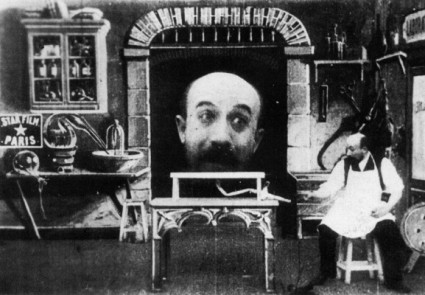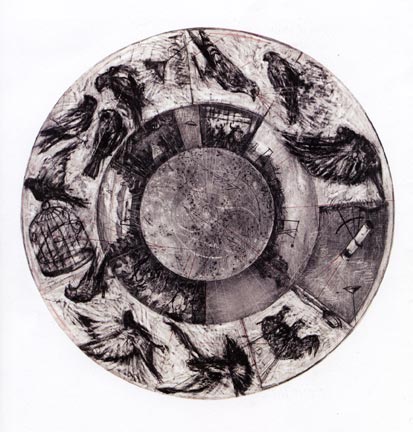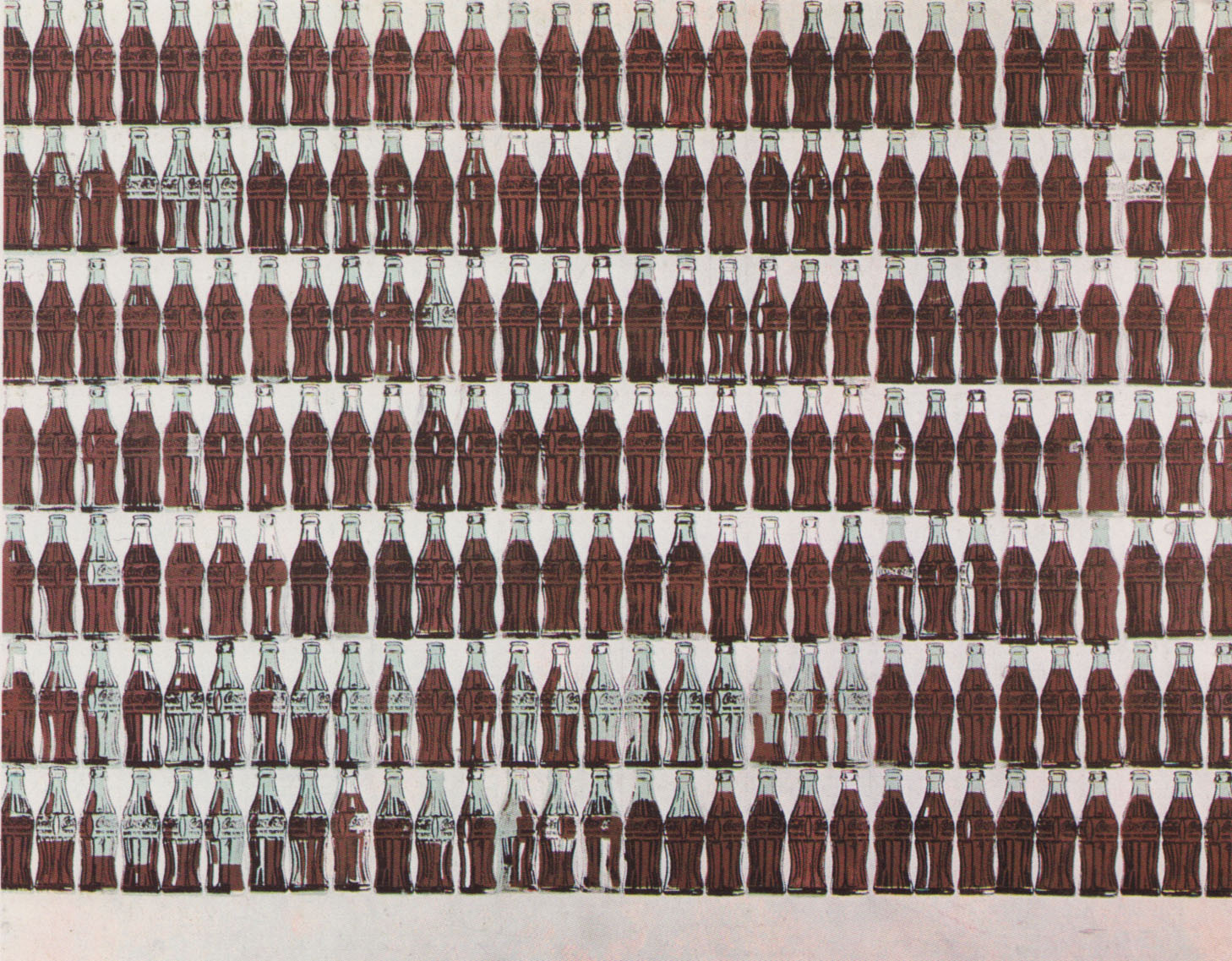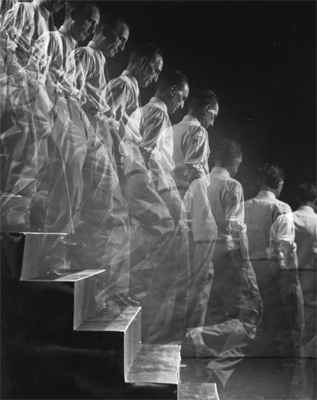Sequence photography is a group of images that need to be viewed in a certain order to make sense. If you loose one of the images the sequence doesn't work. The images could tell a story, create the sense of motion, show the passing of time, create a moody or could simply be the photographers whim.

The death and funeral of Edward the Confessor, Detail of the Bayeux Tapestry 11th Century.
Portable Iconostasis, Moscow 17th Century.
In 1877 Eadweard Muybridge helped the governor of California to win a $25,000
bet that at some point when a horse was running; all four hooves would leave the ground.
He set up a row of multiple cameras and each time the horse tripped a wire a photograph was taken. He ended up with a series of images that when combined created some of the first moving images. Without the likes of Muybridge there would no cinema, TV or most of the content on the Internet.
This is a sequence of shots by Muybridge's taken from two different angles. In his later career he would develop this idea further. In his early work the camera would be it a line and be triggered one after the other - documenting movement. In his later experiments the cameras would be in a circle and take a picture at the same time.
bet that at some point when a horse was running; all four hooves would leave the ground.
He set up a row of multiple cameras and each time the horse tripped a wire a photograph was taken. He ended up with a series of images that when combined created some of the first moving images. Without the likes of Muybridge there would no cinema, TV or most of the content on the Internet.
This is a sequence of shots by Muybridge's taken from two different angles. In his later career he would develop this idea further. In his early work the camera would be it a line and be triggered one after the other - documenting movement. In his later experiments the cameras would be in a circle and take a picture at the same time.
A similar technique was used in the film ‘The Matrix’ to create the Bullet Time effect.
The zoopraxiscope is an early device for displaying motion pictures. Created by photographic pioneer Eadweard Muybridge in 1879, it may be considered the first movie projector. The zoopraxiscope projected images from rotating glass disks in rapid succession to give the impression of motion. The stop-motion images were initially painted onto the glass, as silhouettes.
The device appears to have been one of the primary inspirations for Thomas Edison and William Kennedy Dickson's Kinetoscope, the first commercial film exhibition system.
George Melies 'L’Homme à la tête en caoutchouc' 1903
George Melies 'A Voyage to the moon' 1902
Without the experiments of Muybridge and others Cinema would never have been born. Some of the most exciting and strange early cinema came from George Melies and was truly realized in 'A Voyage to the Moon' 1902. He was the grandfather of special effects and made films entertaining. Other early film experiments took place in Hove, Sussex.
William Kentridge. 'MUSIC BOX TONDO', 2006
William Kentridge make contemporary animations by repeatedly erasing and reworking charcoal drawings on the same piece of paper to create stop-motion animated films. He does not make a story board but makes the animations as he goes. Kentridge sees it as a physical exercise - walking back and forth between the camera and the paper gives him time to improvise with the animation.
Robin Rhode is a contemporary South African artist who creates sequences of images that tell a story. He works directly onto walls or the ground and draws, erases, redraws the sections of the sequence. They have a similar feel to Muybridges work, and like a Muybridge they are primarily designed to be presents as a sequence of images and not an animation.
His earliest works were public performance pieces, often without an audience, staged on the streets of Johannesburg. In 1998, Rhode began documenting these works, which he calls “performative drawings” by taking still photographs that he would later compile into halting video animations that had the texture of flip books. In 2002, after moving to Berlin, Rhode shifted his practice from the urban streets into the contained space of his studio. This allowed for, as he describes, “a distance, an increased desire to take a more analytical position in the formation of ideas outside of the politically and socially charged environment of South Africa.". He has more to do with performance art and graffiti than photography - even though his work is displayed as photographs. In this sense his work is similar to Andy Goldsworthy.
"What’s great about this country is that America started the tradition where the richest consumers buy essentially the same things as the poorest. You can be watching TV and see Coca Cola, and you know that the President drinks Coca Cola, Liz Taylor drinks Coca Cola, and just think, you can drink Coca Cola, too. A coke is a coke and no amount of money can get you a better coke than the one the bum on the corner is drinking. All the cokes are the same and all the cokes are good. Liz Taylor knows it, the President knows it, the bum knows it, and you know it."
--Andy Warhol
The look of Muybridges work seems to Foresee so much 20th Century art - Rhode's included.
Andy Warhol Coke
Andy Warhol's use of multiple images is visually similar to Muybridge's. Warhol turned appropriated commercial images - a bottle of coke, a soap box and a promotional photographs of celebrities - and turned them into silk screens. This allowed him to reproduced them endlessly - mirroring how consumer products are made."What’s great about this country is that America started the tradition where the richest consumers buy essentially the same things as the poorest. You can be watching TV and see Coca Cola, and you know that the President drinks Coca Cola, Liz Taylor drinks Coca Cola, and just think, you can drink Coca Cola, too. A coke is a coke and no amount of money can get you a better coke than the one the bum on the corner is drinking. All the cokes are the same and all the cokes are good. Liz Taylor knows it, the President knows it, the bum knows it, and you know it."
--Andy Warhol
Andy Warhol Super 8 Film
Warhol 'Triple Elvis' 1963. Acrylic and silkscreen ink on canvas
In 'Triple Elvis' a promotional photograph of Elvis is overlaid three times. This creates a visual Jump - creating movement in a static image. It also suggests that celebrity is shallow - that stars are turned into products to be consumed by the viewer. When you see a Warhol in the flesh you notice that each silkscreened image is slightly different to the next. Little imperfections give the initially mechanical image painterly qualities.
Motion studies by Etienne Jules Marey
Etienne-Jules Marey created similar images. Marey was a scientist who used art whereas Muybridge was an artist who created pseudo-scientific images. However, Marey's images were slow shutter speed shots and he used a strobe light. As the strobe flashed it created an image of the figure - therefore creating multiple figures showing the subject move though time and space.
Umberto Boccioni Unique Forms of Continuity in Space 1913
In this sculpture above the futurist artist Umberto Boccioni has captured in three dimensions a figure moving through time and space. Notice how the calf muscles are repeated - like a slow shutter speed photograph made solid. It is similar to Marcel Duchamp's 'Nude Descending a Staircase' where we see a figure repeated going down stairs.'Duchamp Descending a Staircase'
Photograph by Eliot Elisofon.
This image above was part of a 10-page spread in LIFE profiling Duchamp. ("Dada's Daddy," April 28, 1952). It would have been taken with the camera placed on a tripod on a bulb setting. Each time Duchamp took a step Elisdon set off a flash or strobe light - creating a faint impression of Duchamp on the negative.
Marcel Duchamp 'Nude Descending the staircase' 1912
This is a key painting by Marcel Duchamp. At first it looks abstract but on closer inspection you can see a figure walking down a star case. It is similar to a Muybridge than has been overlaid on itself.
Idris Khan rising series… after eadweard muybridge ‘human and animal locomotion’, (2005)
This image above is a muybridge overlaid on itself by th artist Idris Khan - we may come back to him. Duchamp painting looks like a cubist painting but where the cubists were interested it capturing the world from multiple viewpoints this shows a figure moving through time and space. It also wasn't a futurist painting - it was Duchamp's own idea.
Marcel Duchamp 'Nude Descending the staircase' (Detail) 1912
In this detailed section of Duchamp's 'Nude...' we can see it is made up of flat geometrical planes - triangles, lines and sections of circles. The browny yellowish hues allow the abstracted figure to stand out from the darker background. The whole image flickers with movement and jumps between a confusing abstract image to a figure 'decending a staircase'. Not anybody could paint like that.
Nobody liked the painting and Duchamp's own brother asked him to remove it from an exhibition. This experience would encourage Duchamp to follow his own ideas and turn his back on the traditional art world. Five years later he would sign a gentleman's toilet R Mutt and place it in a gallery. The art world was not ready for his 'Nude descending the staircase' (1912). However, his 'Fountain' (1917) would revolutionise twentieth century art.
























